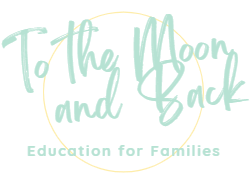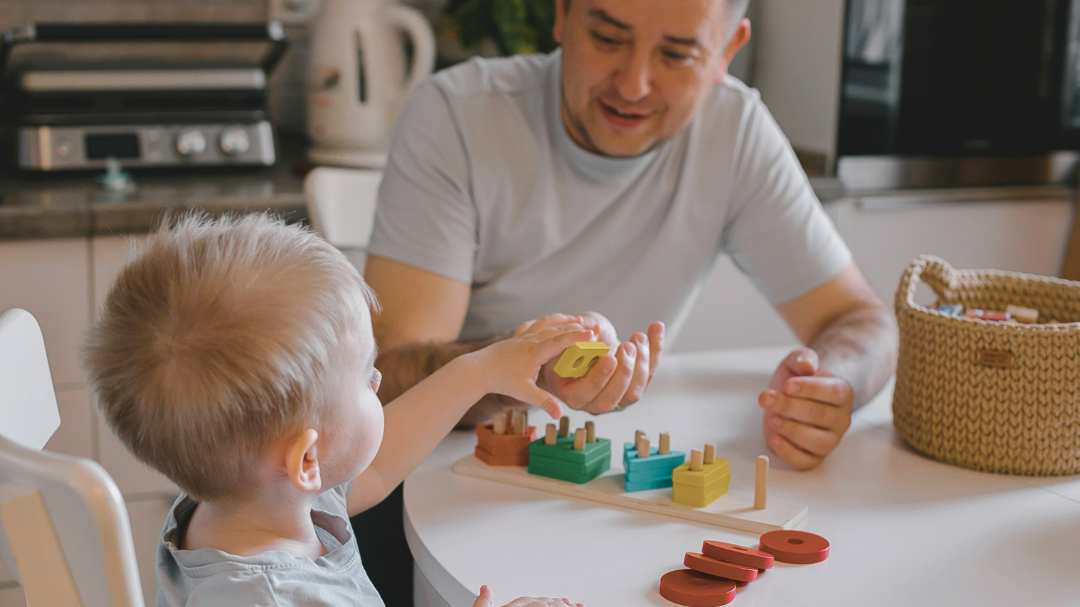
Let’s be honest- all you really need is commitment. But you’re here, which means you have already decided teaching your kiddos at home is the best for your family. You love them, and you want what’s best for them. Your kids can get an excellent education without leaving home to be in the care of someone else. Also, you don’t want to miss a single milestone! I am here because I truly want the best for your kiddos, too. Teaching at home can be one of the best experiences for them and you! I want to support you through this learning adventure. Let’s start with the basics: the five things you need to get started!
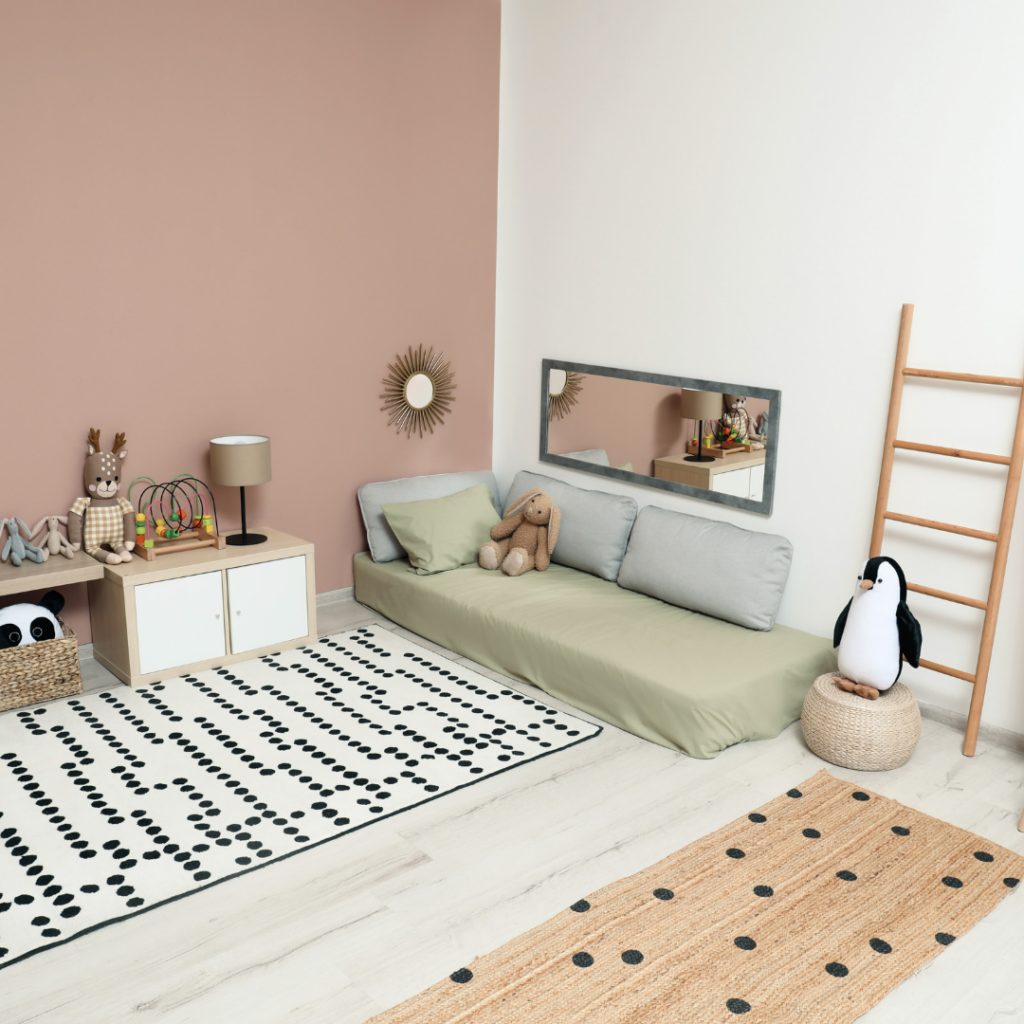

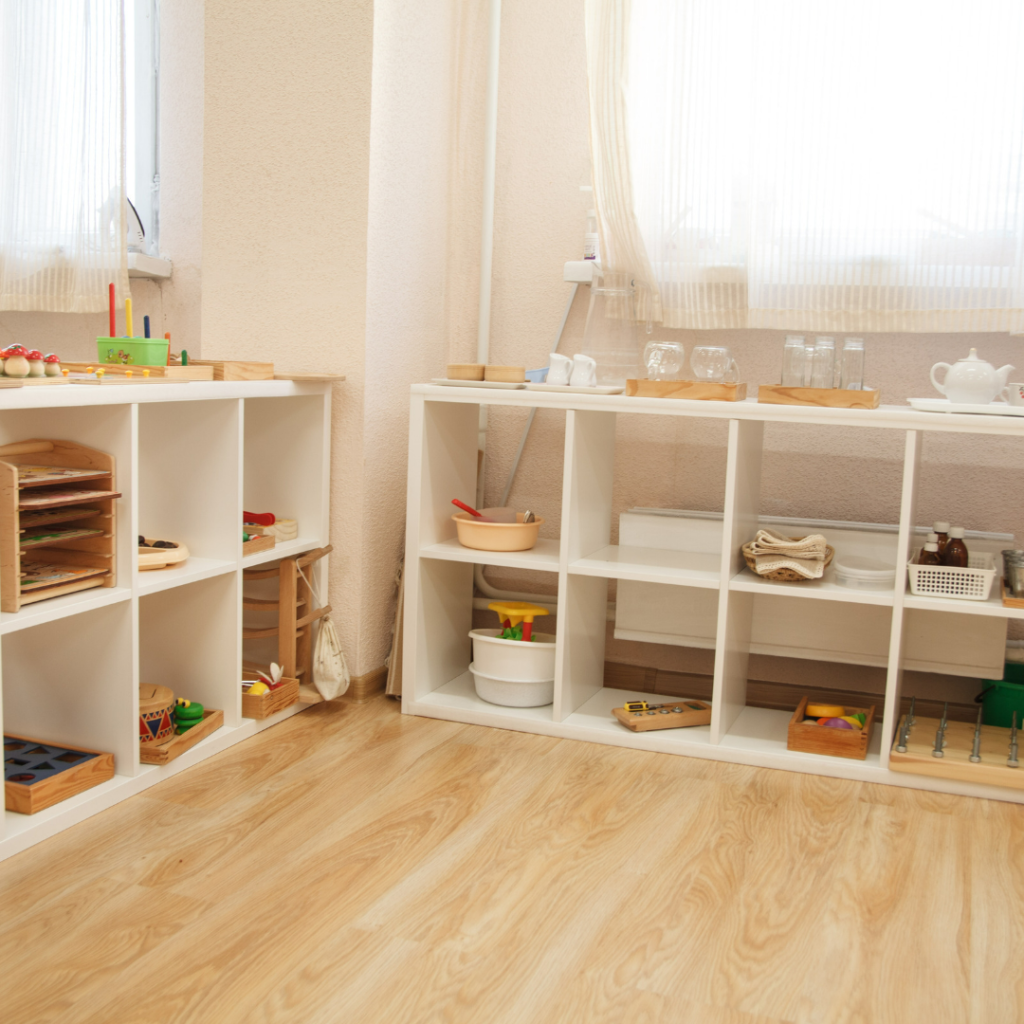
1. Create a Learning Space
You need to designate a space where you can place things out for your child to discover and return to. I call these “things” jobs. Forget your typical meaning for jobs. Here, “job” means the “work” or activity or object they can focus on contained in a tray or basket. Does your Learning Space need to include shelves or those cube shelves you see all over Instagram? No! Your Learning Space can look like stacked shoe box containers, Ziploc bags (or the like) stored in a large container or basket to be pulled out at the ready. Shelves are prettier and more convenient, but they are not NEEDED. Just get creative and make it accessible to the child. Accessible means: at their level, able to be accessed without help, clean, and at whatever start point you have planned for that activity (we get more into that in the Practical Life post). Check out my Montessori Beginner Must Haves list of ideas to help you get started.
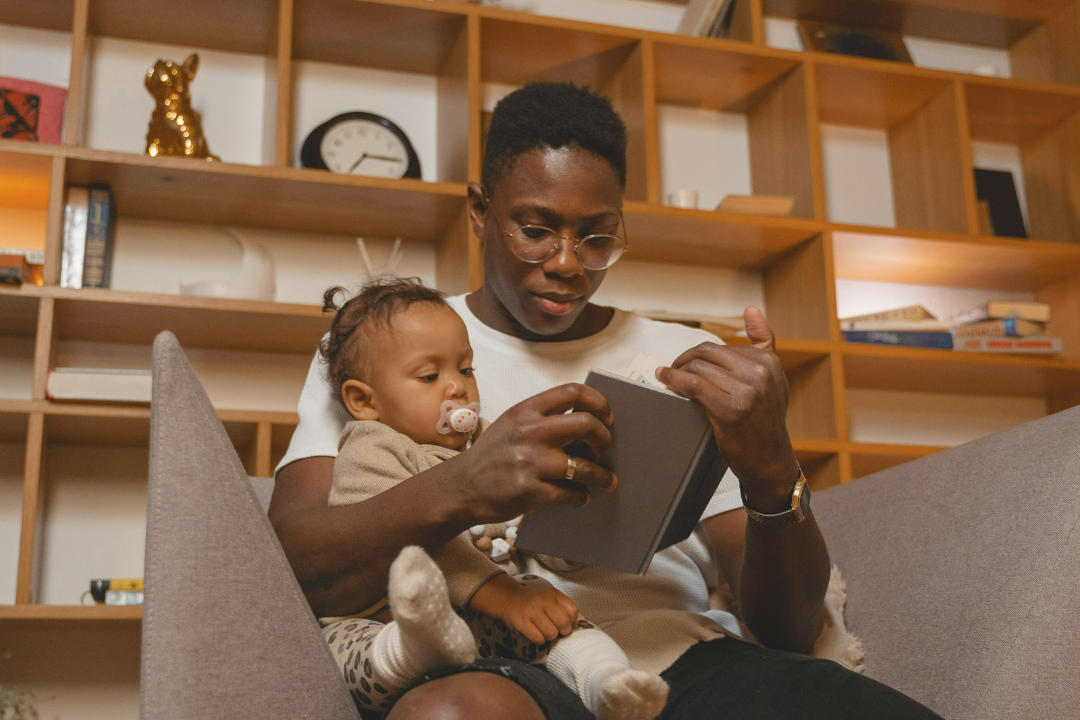
2. BOOKS!
You NEED books! They really are the best learning tool. Books introduce them to your language, and you can provide books that reflect your culture and beliefs. You won’t have bible stories if that’s not your jam. But you might have other religious and holiday books that are unique to you and your family. I suggest having one designated reading nook or place for your child to visit independently. Include a comfy seat, maybe some pillows, and several books on theme! Give your kiddos the space to discover, relax and explore them all on their own. Sometimes they even invite you along! I also suggest providing several baskets around the house- one near the kitchen table, the bathroom, the bedroom, and even the car. Wherever the child can go, there should be at least two books. Here is why: learning opportunities are happening at every moment! Again, the books expose and teach them about language, word structures, sentence structures, and reading flow. They teach what letters look like and how pictures can tell a story. You will probably get bored with the books before they do. But repetition is the key to learning! It’s incredible all the work that books can do for you and with you along your teaching journey. Click here for some of my favorite books to start your library.
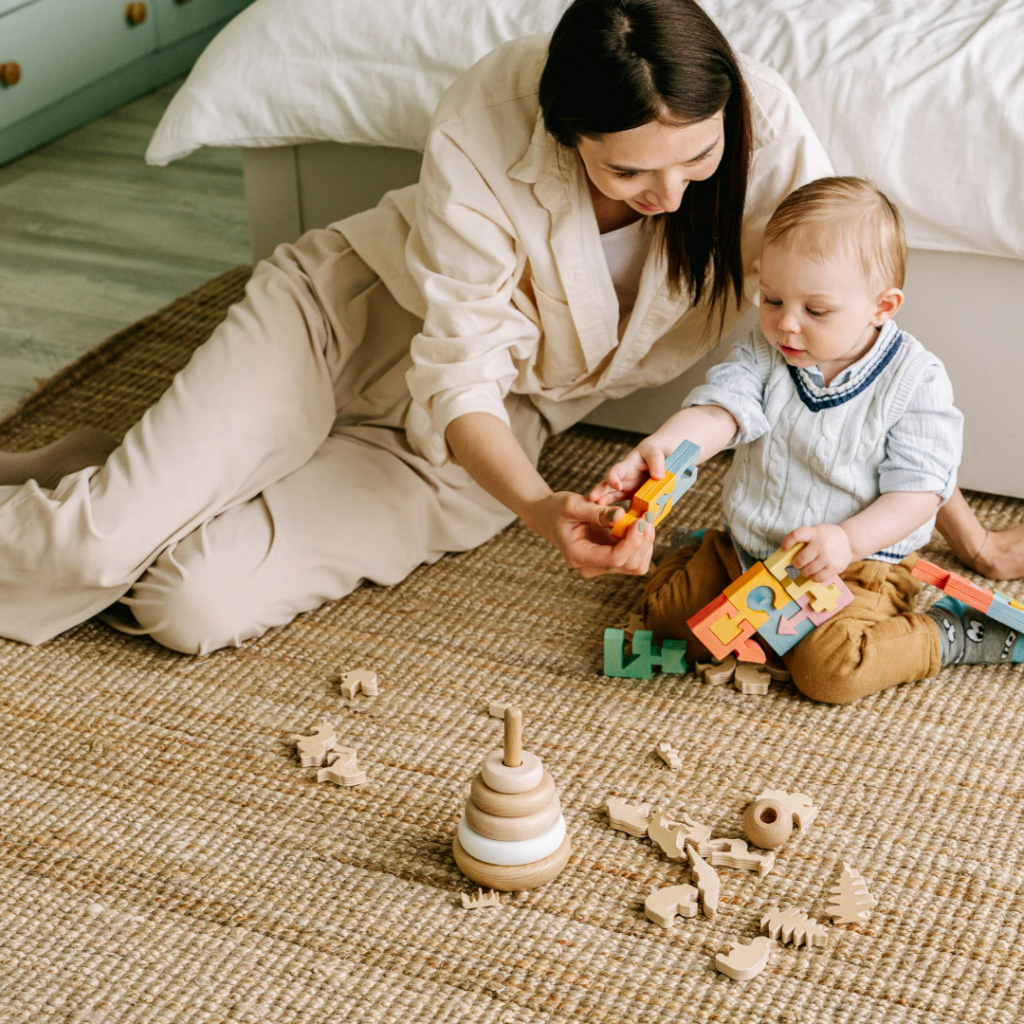
3. Cycle Out Your Activities
What does “cycle out” mean? It’s a refresh! Take what’s currently in their learning space and replace it with new jobs or activities they haven’t seen in a while. When placing jobs out for them, consider their cognitive and physical development stages, topics they are currently into, what’s happening in their environment, and the places you go together. Allow your Learning Space to reflect on these things- as many as you can. I took the guesswork out of this for you by creating my Year One Curriculum. There are ways to address these areas in just 2-5 jobs you can put in your Learning Space. In the classroom, a monthly cycle out was appropriate. We would leave things out or adjust for the current theme if the children seemed interested. We would never stop them from their flow or interest in something because THAT is when they learn the most! Your cycle may look more like every six weeks instead of 4. I do not suggest anything less than four weeks. Whatever tie frame you decide on, be consistent!
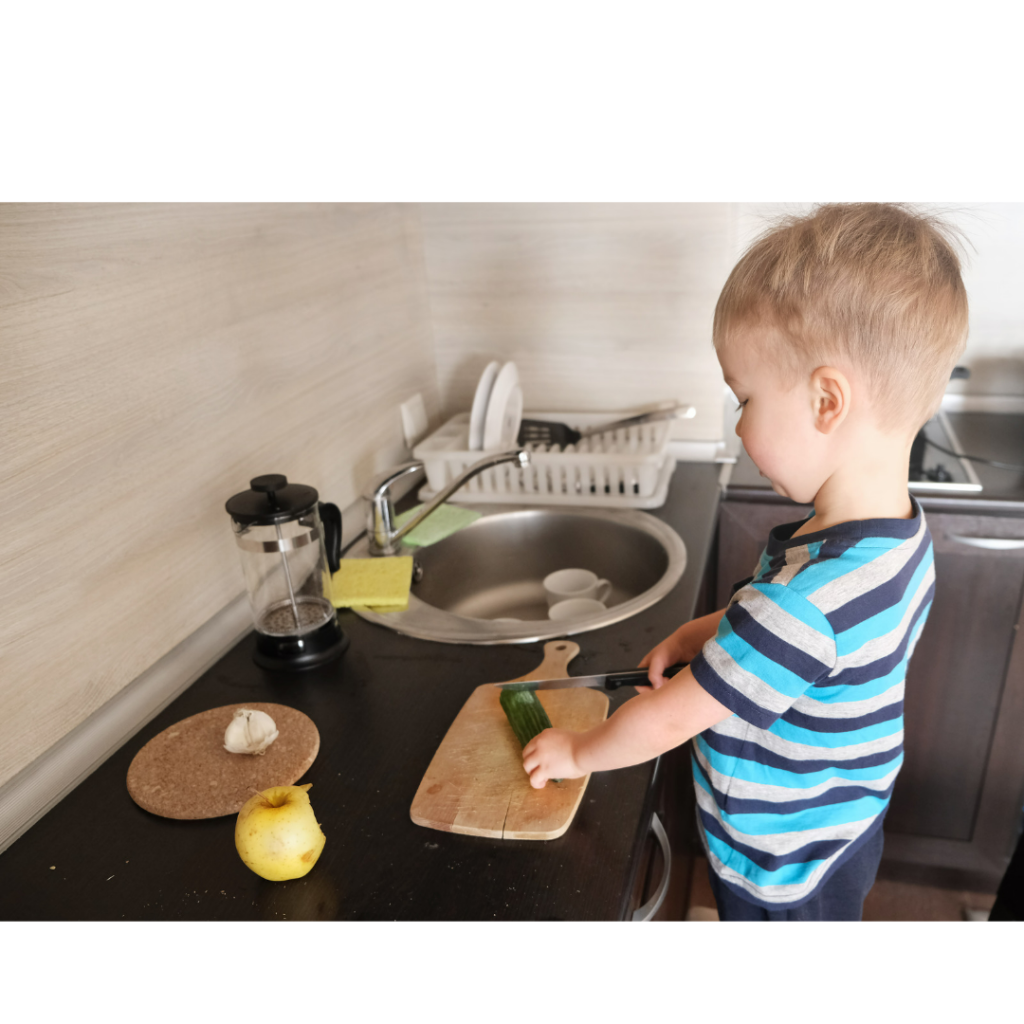
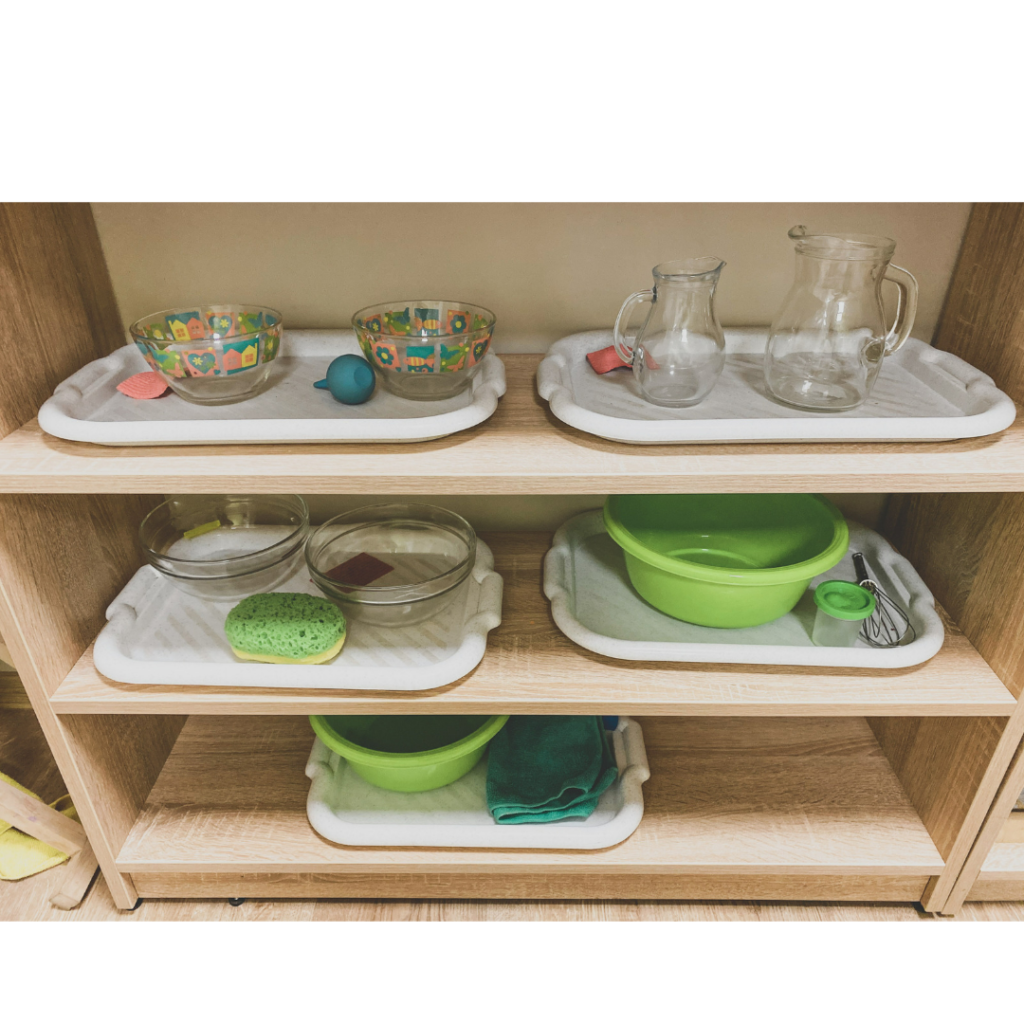

4. Always Include Practical Life!
What is Practical Life? Life is happening all around them, and they notice it all. Practical Life encompasses those daily tasks that we tend to do for ourselves and them but can actually encourage them to do themselves! For example, an easy one is supplying a child-size cleaning kit- broom, mop, dustpan, rags, spray bottle, etc. These things are designed for their tiny hands but allow them to copy what they see happening daily. It gives them a sense of responsibility and care for their environment. Consider giving them space in the kitchen to help using tools that are safe for small hands. Some simpler ideas you can include in your Learning Space would be various bowls, spoons, and the like for transferring! A job for this can look like two small bowls with cotton balls and a spoon- they then use the spoon to transfer (scoop) the cotton balls from one bowl to the next (from left to right). Another way to include Practical Life is to teach them to categorize or sort items. Typically, you take one thing that can have 2-3 colors of each (pom poms, for instance), and they separate the items according to color. Practical Life also helps them with reading and writing, believe it or not. When you set up the work, you put all the objects to the left so the transferring will flow from left to right- in the same direction we read! The transfer tool will be held in their hand, training their fine motor skills and muscles to hold a pencil! These little facts blew my mind when I was first introduced to Montessori. Everything has its purpose and underlying idea. Sneaky and AMAZING! I love it.
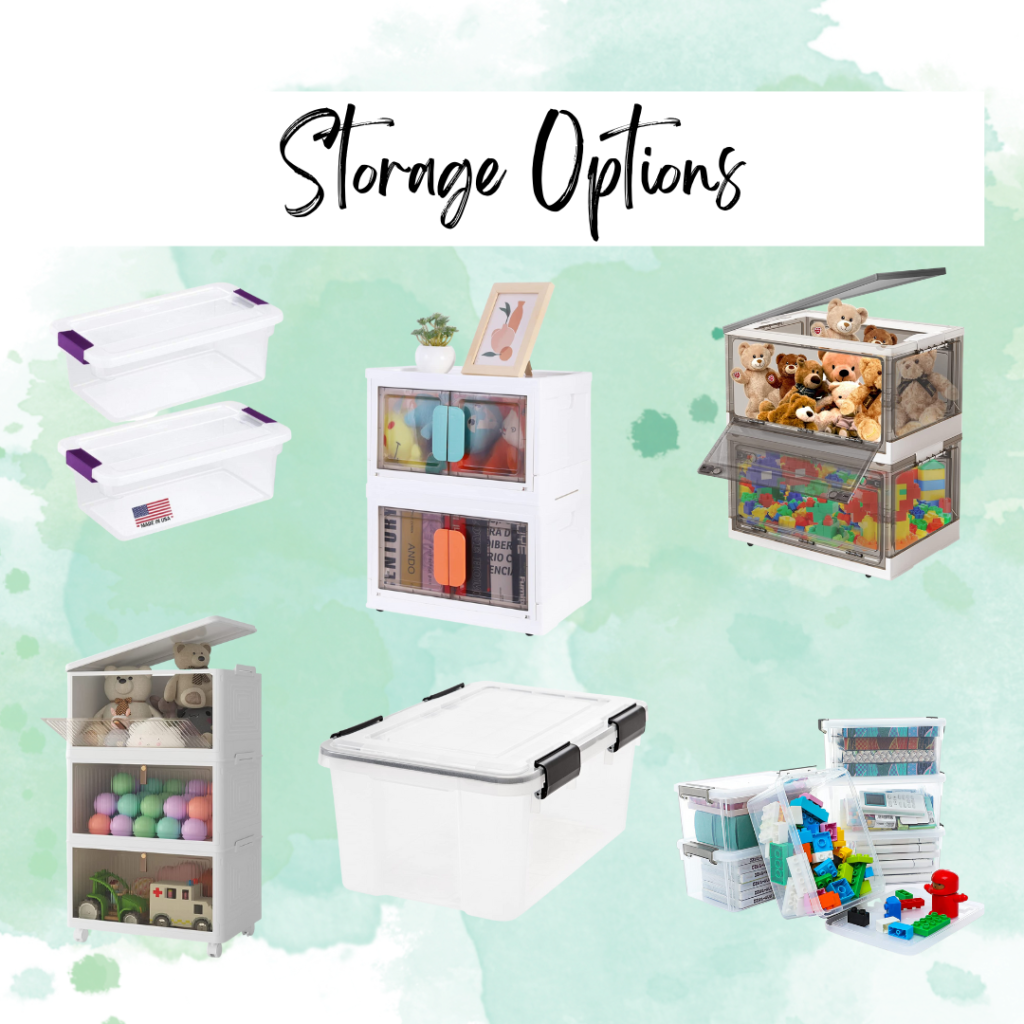
5. Must Have Storage!
Since you will be cycling out activities, you will need somewhere to put them. But trust me when I say- decide where this will be before you start. Your collection will grow, but more importantly, this will make things easier for you. If you’re anything like me (or the thousands of teachers, parents, and caregivers out there), things can pile up quickly! If you already know where you plan to store items, you can easily trade things in and out of your Learning Space. I suggest purchasing bins or storage drawers and labeling them beforehand. It would be best to have a solid plan to eliminate frustration and overbuying items. I’ve linked a few options for you above (click the image above). Please trust me; make a storage plan ahead of time!
These 5 things will get you get you going and your Learning Space ready to explore! Not everything will go as planned as you continue on your journey, but as least you will have a solid foundation to rely on. Check out the Blog for more information and support. Enjoy doing Preschool Together!
